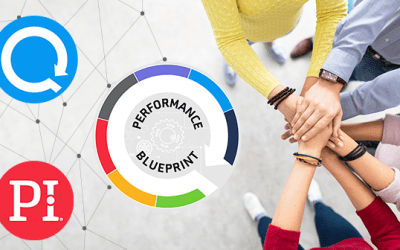Predictive Index profiles are a key part of the PI platform.
Article authored by Qualigence CEO & Founder Steve Lowisz
However, if you’re new to the Predictive Index, they can be confusing!
In a nutshell, a Predictive Index profile tells you how someone is naturally wired.
Let’s dig a little deeper…
Predictive Index Profiles Explained
The Behavioral Assessment from PI measures four key drivers.
Each driver creates a need which causes people to engage in different behavior.
But we all have a different blend of drivers.
Some people are driven to be more social. Others are driven to be formal, and so forth.
The four main drivers measured by PI are Dominance, Extraversion, Patience, and Formality.
So how does this tie in?
Predictive Index Profiles refer to categories of similar driver scores. PI identified 17 reference profiles in total. Altogether, they are easy to reference groupings of the characteristics of people who have similar drives.
For example, the Collaborator reference profile indicates a high extraversion drive and a low formality drive.
The actual profiles may vary from Collaborator to Collaborator, but all follow this pattern.
Think of Reference Profiles like a neighborhood. It gives you the big picture of someone’s general drivers. However, it’s not as accurate as a street address!
There Are No “Good” or “Bad” Predictive Index Profiles
It’s important to remember that there’s no such thing as a “good” or “bad” profile. Instead, Predictive Index profiles are just different.
We’re all wired differently. Some people thrive on variety. Others work better with a consistent workflow.
It doesn’t mean one or the other is better.
It just means we’re all driven to behave in different ways.
By understanding HOW people are wired differently, we can build stronger teams. As leaders, we can understand our direct reports better. And we can lead our people so that they feel empowered.
In sum, it’s about leveraging each team member’s unique strengths. Furthermore, you can create an environment where every team member thrives.
Every Profile Has Unique Strengths and Blind Spots
Look, nobody’s perfect. Likewise, we all have our strengths.
Predictive Index Profiles allow us to quickly understand someone’s strengths and potential blind spots.
As a leader, this is invaluable. It helps you understand where each team member may need additional support.
Take our example. Like many businesses, we went remote overnight in March of 2020.
We knew some team members would thrive working from home. On the other hand, we knew some might need extra attention from their leaders.
We were able to pinpoint which team members would need more frequent check-ins from their team.
This made it WAY easier to transition to remote work!
It’s a huge advantage for any leader.
Multiple Profiles Can Succeed in a Role
Another important point is that multiple predictive index profile can succeed in a specific role.
Some may be a natural fit for certain roles.
However, individuals can adapt and even excel with the right support and team.
In short, it’s about understanding where team members may need support or guidance!
You Can’t Grow Your Team if You Don’t Know Your Team
You can’t help your team grow if you don’t understand them.
Predictive Index profiles help you do just that.
It’s all about understanding how your people are naturally wired.
With that knowledge, you can help them take their performance to the next level.
In conclusion, it all starts with understanding!





